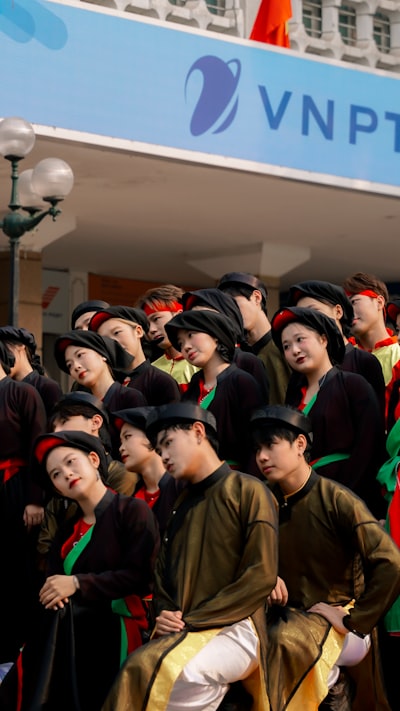How China’s WWII Narrative Shapes Modern Patriotism, National Identity, and Geopolitics
World War II remains a defining chapter in China’s national memory, driving not only its commemoration culture but also forging the narratives that underpin today’s patriotism, education, and global politics. As China marks the 80th anniversary of its "victory against Japan and fascism," questions about the country’s approach to historical trauma, nationalism, and its stance on peace versus power are becoming more relevant than ever. Here’s how China’s portrayal of World War II continues to influence current debates and trends in East Asia and beyond.
China’s WWII Narrative: Key Themes and Keywords
Related Keywords: China WWII narrative, Nanjing Massacre, Chinese patriotism, Japanese war crimes, historical trauma, anti-Japanese sentiment, national pride, Communist Party, military parade, China-US rivalry, South China Sea tensions, Chinese museum exhibitions, national humiliation, Xi Jinping, peace versus nationalism, education curriculum China, Chinese military history.
The Power of Museums and Memory in Forging National Identity
- Museums like the Museum of the War of Chinese People’s Resistance Against Japanese Aggression are not just repositories of artifacts—they're critical tools for education and political storytelling.
- Exhibitions highlight Japanese military atrocities and celebrate Chinese resistance, using emotional imagery to establish a collective identity rooted in suffering, resilience, and eventual triumph.
- Chinese school curricula reinforce this narrative, with annual commemorations and visits designed to invoke pride and vigilance among youth.
Why do these narratives matter? In the digital age, where viral content can escalate old wounds and contribute to xenophobia, the way history is taught and memorialized—especially to children—has a real-world impact on public attitudes toward foreign countries, nationalism, and even personal identity.
Patriotism or Nationalism? Navigating the Fine Line
- Patriotism in China is not just about love for the country—it’s celebrated as a duty to defend against aggression, drawing heavily from historical episodes like the Nanjing Massacre and broader ‘Century of Humiliation’.
- Nationalism, while a unifying force, can quickly morph into dangerous territory. Recent incidents of violence towards Japanese nationals in China, fueled by social media outrage and sensationalism, have prompted concern about rising intolerance and racism.
- Beijing attempts to balance this by condemning attacks and emphasizing the government’s commitment to peace, but historical pain remains a potent force in online and offline discourse.
Peace, Power, and the Global Stage: China’s Self-Image
- China projects itself as a "peace-loving nation"—a narrative contrasted against historic Western colonialism and Japan’s wartime aggression. This message resonates strongly with other developing countries in the Global South.
- However, regional tensions in the South China Sea, with countries like the Philippines and Vietnam, and confrontations over Taiwan and the Diaoyu/Senkaku islands, test China’s pacifist image.
- China’s moral and economic support for Russia following the Ukraine conflict has increased Western skepticism over its so-called commitment to peace.
The Role of Leadership and the Communist Party in Shaping Memory
- President Xi Jinping is central to the framing of World War II remembrance, casting himself and the Communist Party of China (CPC) as the primary defenders and rejuvenators of the nation.
- Official commemorative events often minimize the role of the Kuomintang (KMT), who fought much of the war, to underscore the CPC’s legitimacy and reinforce unity.
- The slogan at Beijing’s war museum—“The Communist Party of China is the most resolute in defending our people’s independence and interests, and the bravest in resisting foreign invasion”—summarizes this posture.
China-US Rivalry: From Historical Lessons to New Geopolitical Battlegrounds
- The WWII narrative is increasingly invoked in debates about US-China relations, with the US often cast as the new external threat—now wielding economic sanctions and tech bans instead of armies.
- The lesson promoted by Chinese leaders: Only national strength and unity can prevent a recurrence of humiliation and aggression.
Frequently Asked Questions (FAQs)
Q: Why does China emphasize WWII history so strongly in education and public life? A: To instill patriotism, caution against foreign threats, legitimize the Communist Party’s rule, and create a unified national identity rooted in overcoming adversity.
Q: Is anti-Japanese sentiment still strong in China today? A: Yes, though it is primarily directed at historical militarism rather than modern Japan, incidents of violence and online hostility occasionally spike due to viral content or political events.
Q: How does China’s WWII narrative affect its foreign policy? A: It underpins China’s claims of peaceful ascent, shapes public support for assertive policies, and informs its posture in regional disputes and US tensions.
Q: What role does President Xi Jinping play in WWII commemorations? A: Xi uses these events to reinforce party legitimacy, rally national pride, and tie his leadership to China’s resurgence on the world stage.
Key Takeaways: Understanding the Real Impact of China’s WWII Narrative
- China’s WWII commemoration isn’t just about remembrance—it’s a tool for shaping public consciousness, sustaining party authority, and navigating complex geopolitics.
- The balance between pride, pain, and peace is fragile, as history is repeatedly called upon to justify policies and forge unity.
- As global power dynamics evolve, understanding these narratives is essential for grasping both domestic Chinese attitudes and the country’s approach to international relations.
Whether you’re a historian, educator, policy-watcher, or simply curious about the deeper forces shaping today’s China, recognizing the power of storytelling around WWII is critical for interpreting news, opinion, and strategy across East Asia and the world.

Comments
No comments yet. Be the first to comment!